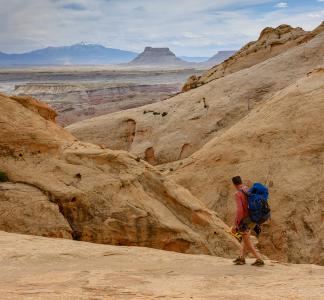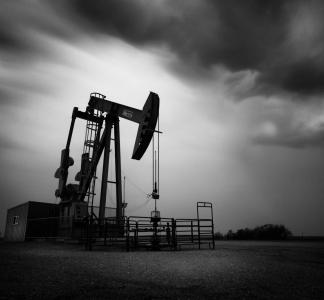Wide open spaces: Protecting the Northern Red Desert from drilling

Northern Red Desert, WY
Mason Cummings, TWS
Inimitable landscape offers wild lands, wildlife, scenery and solitude
In the southwest corner of Wyoming, the Northern Red Desert and Big Sandy Foothills are a remote, picturesque landscape of vast wide-open public lands rich with cultural sites and wildlife habitats. The ancestral home of several tribes, those who have seen it firsthand know “[they] were not the first or only people to have seen that view” even if it feels like another planet.
The English name for this area is the Northern Red Desert (Ayngah Vahseh Sogoep for the Eastern Shoshone and Teeceeno’ for the Northern Arapaho) and it is considered by many to be one of the most unique intact landscapes in the continental United States. Despite what its contemporary nickname “The Big Empty” suggests—and what oil and gas companies would like the public to believe—it is an area teeming with biodiversity.
“Oil and gas companies will argue that there's nothing there. But when you get off the roads and you open your eyes to the plant life and animals and birds it's an incredibly robust place… that almost makes you feel like you're on another planet.”
The Northern Red Desert and Big Sandy Foothills provide vital habitat for a great many beloved North American wildlife species, including pronghorn, mule deer, desert elk, mountain plover, golden eagles and the threatened sage-grouse. It is a vital piece of connective tissue for migratory species, and recently researchers discovered it supports one of the longest known mule deer migration corridors. In one stunning example, they documented a single deer journeying nearly 250 miles one way between the Greater Yellowstone area and the Northern Red Desert.
But you don’t need to take my word for it. See for yourself and hear from Jason Baldes—a member of the Eastern Shoshone Tribe, executive director of the Wind River Tribal Buffalo Initiative, tribal buffalo coordinator for National Wildlife Federation's Tribal Partnership Program and vice president of the Intertribal Buffalo Council—what makes this “incredibly robust place” so special.
For decades, the Northern Red Desert and Big Sandy Foothills have been managed by the Bureau of Land Management (BLM) under the direction of a plan drafted in 1997 (though some of the area saw plan revisions regarding oil and gas projects in 2006). That means that even now, decisions on land use and stewardship are being guided by documents that are woefully out of date for the contemporary moment.
The update now being proposed by the BLM’s Rock Springs Field Office takes major steps to modernize management practices, incorporate the latest research and respond to community priorities. The proposal includes bold new actions to protect the landscape from major threats—namely, mining, drilling, pipelines and transmission lines. Up to 61 percent of lands in the Field Office would be closed to oil and gas leasing, as opposed to only 15 percent now. At the same time, roughly 1 million acres of low-conflict lands—areas with little controversy about use—would remain open for renewable energy projects to help support the transition from fossil fuels.

A map of the Bureau of Land Management's Rock Springs Field Office and proposed Resource Management Plan.
Kenzie Bosher, TWS
Equally exciting are the steps that the update takes to ensure that landscapes stay healthy and connected. The Rock Springs plan would designate 1.6 million acres as areas where habitat and wild nature conservation are prioritized while looking to maintain “wilderness qualities” in certain areas. It would also ensure that the incredible Red Desert to Hoback mule deer migration corridor is off-limits for disruptive industrial activities like mining and drilling. The mule deer undertaking that long-distance migration from winter to summer ranges could continue to roam free.
But this plan is not yet finalized, and conservation opponents—including the oil and gas industry—are lobbying hard to pull the plug on this effort before it can be implemented. We need your support to ensure that the Northern Red Desert and Big Sandy Foothills remain intact for generations of people and wildlife to come. Please, take a moment to send a comment to BLM showing your support for conserving these two irreplaceable landscapes!



